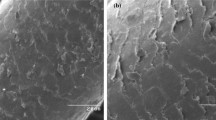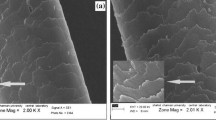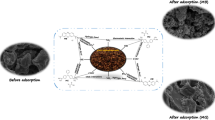Abstract
In this study, waste human hair was converted into hydrochar using the subcritical water medium for the first time. The produced hydrochar from waste human hair (WHH) was employed as an adsorbent for Reactive Red 180 (RR180) and Basic Red 18 (BR18) removal from the aqueous solutions. The adsorption processes were optimized by studying the affecting factors. As a result of the optimization process, the maximum RR180 removal occurred at pH 2, WHH dose of 1 g/L, and at a time of 60 min. For BR18, the best conditions were pH 8, WHH dose of 1 g/L, and time of 60 min. Langmuir and Freundlich models were used to study the adsorptions isotherms. Langmuir isotherm described the RR180 adsorption, while Freundlich had the best fit data for BR18 adsorption. The kinetic studies showed that the adsorptions of RR180 and BR18 were represented by the pseudo-first-order and Elovich models, respectively. Also, the thermodynamic results ensured that the adsorption process occurred spontaneously in nature.











Similar content being viewed by others
References
Saleh M, Bilici Z, Kaya M, Yalvac M, Arslan H, Yatmaz HC, Dizge N (2021) The use of basalt powder as a natural heterogeneous catalyst in the Fenton and Photo-Fenton oxidation of cationic dyes. Adv Powder Technol
Thanavel M, Kadam SK, Biradar SP, Govindwar SP, Jeon B, Sadasivam SK (2019) Combined biological and advanced oxidation process for decolorization of textile dyes. SN Appl Sci 1(97)
Ahmed H, Mikhail M, El-Sherbiny S, Nagy K, Emam H (2020) pH responsive intelligent nano-engineer of nanostructures applicable for discoloration of reactive dyes. J Colloid Interface Sci 561:147–161
Tanzifi M, Yaraki MT, Beiramzadeh Z, Saremi LH, Najafifard M, Moradi H, Mansouri M, Karami M, Bazgir H (2020) Carboxymethyl cellulose improved adsorption capacity of polypyrrole/ CMC composite nanoparticles for removal of reactive dyes: Experimental optimization and DFT calculation. Chemosphere 255:127052
NN, KR (2020) Selective adsorption and separation of toxic cationic dyes using hierarchically porous SDBS modified vaterite microspheres (Hr-SMV). J Phys Chem Solids 146:109598
Chong KCC, Zakaria S, Sajab M (2014) Vaterite calcium carbonate for the adsorption of Congo red from aqueous solutions. J Environ Chem Eng 2:2156–2161
Pearce C, Christie R, Boothman C, von Canstein H, Guthrie J, Lloyd J (2006) Reactive azo dye reduction by Shewanella strain J18 143. Biotechnol Bioeng 95(4):692–703
Elumalai S, Saravanan G (2016) The role of microalgae in textile dye industrial waste Water recycle (phycoremediation). Int J Pharma Bio Sci
Darwesh O, Matter I, Eida M (2019) Development of peroxidase enzyme immobilized magnetic nanoparticles for bioremediation of textile wastewater dye. J Environ Chem Eng 7:102805
Dotto J, Fagundes-Klen M, Veit M, Palácio S, Bergamasco R (2019) Performance of different coagulants in the coagulation/flocculation process of textile wastewater. J Clean Prod 208:656–665
Nordin N, Ho L-N, Ong S-A, Ibrahim A, Lee S-L, Ong Y-P (2019) Elucidating the effects of different photoanode materials on electricity generation and dye degradation in a sustainable hybrid system of photocatalytic fuel cell and peroxi-coagulation process. Chemosphere 214:614–622
Saleh M, Yildirim R, Isik Z, Karagunduz A, Keskinler B, Dizge N (2021) Optimization of the electrochemical oxidation of textile wastewater by graphite electrodes by response surface methodology and artificial neural network. Water Sci Technol
Dos Santos A, Garcia-Segura S, Dosta S, Cano I, Martínez-Huitle C, Brillas E (2019) A ceramic electrode of ZrO2-Y2O3 for the generation of oxidant species in anodic oxidation. Assessment of the treatment of Acid Blue 29 dye in sulfate and chloride media. Sep Purif Technol 115747:228
Berkessa Y, Yan B, Li T, Jegatheesan V, Zhang Y (2020) Treatment of anthraquinone dye textile wastewater using anaerobic dynamic membrane bioreactor: performance and microbial dynamics. Chemosphere238:124539
Jegatheesan V, Pramanik B, Chen J, Navaratna D, Chang C, Shu L (2016) Treatment of textile wastewater with membrane bioreactor: a critical review. Bioresour Technol 204:202–212
Tanzifi M, Yaraki MT, Beiramzadeh Z, Saremi LH, Najafifard N, Moradi H, Mansouri M, Karami M, Bazgir H (2020) Carboxymethyl cellulose improved adsorption capacity of polypyrrole/CMC composite nanoparticles for removal of reactive dyes: Experimental optimization and DFT calculation. Chemosphere255:127052
Behboudi G, Shayesteh K, Yaraki MT, Ebrahimi HA, Moradi S (2021) Optimized synthesis of lignin sulfonate nanoparticles by solvent shifting method and their application for adsorptive removal of dye pollutant. Chemosphere285:131576
Saleh M, Bilici Z, Ozay Y, Yabalak E, Yalvac M, Dizge N (2021) Green synthesis of Quercus coccifera hydrochar in subcritical water medium and evaluation of its adsorption performance for BR18 dye. Water Sci Technol
Tan I, Ahmad A, Hameed B (2008) Adsorption of basic dye on high-surface-area activated carbon prepared from coconut husk: equilibrium, kinetic and thermodynamic studies. J Hazard Mater 154(1–3):337–346
S. Biswas, S. Mohapatra, U. Kumari, B. Meikap and T. Sen (2020) “Batch and continuous closed circuit semi-fluidized bed operation: Removal of MB dye using sugarcane bagasse biochar and alginate composite adsorbents,” Journal of Environmental Chemical Engineering, vol. 8, no. 103637.
Banerjee S, Dubey S, Gautam R, Chattopadhyaya M, Sharma Y (2019) Adsorption characteristics of alumina nanoparticles for the removal of hazardous dye, Orange G from aqueous solutions. Arab J Chem 12(8):5339–5354
Zimmerman A, Gao B, Ahn M-Y (2011) Positive and negative carbon mineralization priming effects among a variety of biochar-amended soils. Soil Biol Biochem 43:1169–1179
Mohan D, Sarswat A, Ok Y, Pittman C (2014) rganic and inorganic contaminants removal from water with biochar, a renewable, low cost and sustainable adsorbent – A critical review. Biores Technol 160:191–202
Yabalak E (2018) Degradation of ticarcillin by subcritical water oxidation method: Application of response surface methodology and artificial neural network modeling. Journal of Environmental Science and Health, Part A 53:975–985
Yabalak E (2018) An approach to apply eco-friendly subcritical water oxidation method in the mineralization of the antibiotic ampicillin. J Environ Chem Eng 6:7132–7137
Yabalak E, Külekçi B, Gizir A (2019) Application of ultrasound-assisted and subcritical water oxidation methods in the mineralisation of Procion Crimson H-EXL using response surface methodology and artificial neural network. Journal of Environmental Science and Health, Part A 54:1412–1422
Gupta A (2014) Human Hair “Waste” and Its Utilization: Gaps and Possibilities. Journal of Waste Management 2014:1–17
Qian W, Sun F, Xu Y, Qiu L, Liu C, Wang S, Yan F (2014) Human hair-derived carbon flakes for electrochemical supercapacitors. Energy Environ Sci 7:379–386
Saleh M, Yalvaç M, Sime F, Mazmanci M (2019) STUDY THE EFFECT OF HAIR STYLE PRODUCTS ON THE QUALITY OF DOMESTIC WASTEWATER- WAX AS CASE STUDY. Turkish Journal of Engineering 3(2):97–101
Pramanick B, Cadenas L, Kim D-M, Lee W, Shim Y-B, Martinez-Chapa S, Madou M, Hwang H (2016) Human hair-derived hollow carbon microfibers for electrochemical sensing. Carbon 107:872–877
Zheljazkov V (2005) Assessment of Wool Waste and Hair Waste as Soil Amendment and Nutrient Source. J Environ Qual 34:2310–2317
Yabalak E, Gizir A (2020) Treatment of Agrochemical Wastewater by Subcritical Water Oxidation Method: Chemical Composition and Ion Analysis of Treated and Untreated Samples. J Environ Sci Heal A
Yabalak E, Elneccar F (2021) Synthesis of hydrochars in subcritical water medium from solid wastes and investigation of their catalytic effects in the degradation of malachite green using advanced oxidation technique. Biomass Conv Bioref
Saleh M, Isik Z, Yabalak E, Yalvac M, Dizge N (2021) Green production of hydrochar nut group from waste materials in subcritical water medium and investigation of their adsorption performance for Crystal Violet. Water Environ Res
Bouras HD, Yeddou AR, Bouras N, Hellel D, Holtz MD, Sabaou N, Chergui A, Nadjemi B (2017) Biosorption of Congo red dye by Aspergillus carbonarius M333 and Penicillium glabrum Pg1: Kinetics, equilibrium and thermodynamic studies. J Taiwan Inst Chem Eng 80:915–923
Langmuir I (1918) The adsorption of gases on plane surfaces of glass, mica and platinum. Am Chem Soc 40:1361–1403
Freundlich H (1906) Over the adsorption in solution. J Phys Chem 57:385–470
Lagergren S (1898) Zur theorie der sogenannten adsorption geloester stoffe. Veternskapsakad Handl 24(4):1–39
Ho Y, Wase D, Forster C (1996) Removal of lead ions from aqueous solution using sphagnum moss peat as adsorbent. Water SA 22:219–224
Elovich A, Larinov O (1962 ) Theory of adsorption from solutions of non-electrolytes on solid (I) equation adsorption from solutions and the analysis of its simplest form,(II) verification of the equation of adsorption isotherm from solutions. Izv Akad Nauk SSSR Otd Khim Naukvol 2: 209–216
Weber W, Morris J (1963) Kinetics of adsorption on carbon from solutions. J Sanit Eng Div 89:31–60
Tutem E, Apak R, Unal C (1998) Adsorptive removal of chlorophenols from water by bituminous shale. Water Res 32:2315–2324
Alver E, Metin AÜ (2012) Anionic dye removal from aqueous solutions using modified zeolite: Adsorption kinetics and isotherm studies. Chem Eng J 200–202:59–67
Lingeswari UD, Vimala T (2020) Adsorption study on removal of reactive blue 21 and reactive red 180 from aqueous medium using polyaniline CuCl2 in the presence of UV light. Rasayan J Chem 13(3):1544–1554
Karim A, Mounir B, Hachkar M, Bakasse M, Yaacoubi A (2009) Removal of Basic Red 46 dye from aqueous solution by adsorption onto Moroccan clay. J Hazard Mater 168:304–309
Fil B, Karcioglu Karakas Z, Boncukcuiglu R, Yilmaz A (2013) Removal of cationic dye (basic red 18) from aqueous solution using natural Turkish clay. Glob Nest J 15(4):529 - 541
Isik Z, Saleh M, Dizge N (2021) Adsorption studies of ammonia and phosphate ions onto calcium alginate beads. Surf Inter 26:101330
Boulinguiez B, Le Cloirec P, Wolbert D (2008) Revisiting the Determination of Langmuir Parameters—Application to Tetrahydrothiophene Adsorption onto Activated Carbon. Langmuir 24:6420–6424
Belhachemi M, Addoun F (2011) Comparative adsorption isotherms and modeling of methylene blue onto activated carbons. Appl Water Sci 1:111–117
Hameed BH, Din ATM, Ahmad AL (2007) Adsorption of methylene blue onto bamboo-based activated carbon: kinetics and equilibrium studies. J Hazard Mater 141(3):819–825
Saleh M, Yalvaç M, Arslan H (2019) Optimization of Remazol Brilliant Blue R Adsorption onto Xanthium Italicum using the Response Surface Method. Karbala Int J Mod Sci 8:1(8)
Saleh M, Yalvaç M, Arslan H, Gün M (2019) Malachite Green Dye Removal from Aqueous Solutions Using Invader Centaurea Solstitialis Plant and Optimization by Response Surface Method: Kinetic, Isotherm, and Thermodynamic Study. European Journal of Science and Technology 17:755–768
Inyinbor A, Adekola F, Olatunji G (2016) Kinetics, isotherms and thermodynamic modeling of liquid phase adsorption of Rhodamine B dye onto Raphia hookerie fruit epicarp. Water Resources and Industry 15:14–27
Kajjumba SR, Mahajan R (2016) Equilibrium, kinetics and thermodynamic parameters for adsorptive removal of dye Basic Blue 9 by ground nut shells and Eichhornia. Arab J Chem 9:S1464–S1477
Author information
Authors and Affiliations
Contributions
All authors contributed to the study conception and design.
Material preparation, data collection, and analysis were performed by Zelal Isik, Mohammed Saleh, Islem M’barek, and Erdal Yabalak.
The draft of the manuscript was prepared and finalized by Nadir Dizge and Balakrishnan Deepanraj.
All authors read and approved the final manuscript.
Corresponding authors
Ethics declarations
Conflict of interest
The authors declare no competing interests.
Additional information
Publisher's note
Springer Nature remains neutral with regard to jurisdictional claims in published maps and institutional affiliations.
Rights and permissions
About this article
Cite this article
Isik, Z., Saleh, M., M’barek, I. et al. Investigation of the adsorption performance of cationic and anionic dyes using hydrochared waste human hair. Biomass Conv. Bioref. 14, 3715–3728 (2024). https://doi.org/10.1007/s13399-022-02582-2
Received:
Revised:
Accepted:
Published:
Issue Date:
DOI: https://doi.org/10.1007/s13399-022-02582-2




